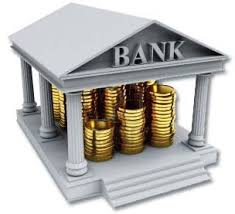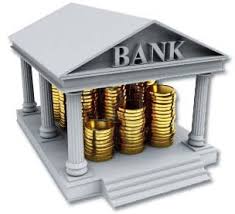
The U.S. economy needs more public spending to shift into higher gear – is the message that the Federal Reserve chief and her colleagues have for politicians even as markets wait for Janet Yellen's latest message about the direction of monetary policy.
Government infrastructure spending and other efforts to counter weak growth, sagging productivity improvements, and lagging business investment have been called for in their speeches and Congressional hearings in the past few weeks by Yellen and three of the Fed's other four Washington-based governors.
The idea has been supported by the fifth member.
The Fed’s officials traditionally refrain from discussing fiscal policy in detail as it has no direct influence over it. But a strong signal to the next president and Congress about the limits they face in setting monetary policy and what is needed to improve the economy's prospects has been sent with its top officials - from Yellen to former investment banker and Bush administration official Jerome Powell - speaking in one voice.
The unanimous message from the Fed's top policymakers is that the central banks' "toolkit" is not enough even as the Fed seems to focus on the use of such tools.
"Monetary policy is not well equipped to address long-term issues like the slowdown in productivity growth," Fed vice chair Stanley Fischer said on Sunday. More investment in infrastructure and education is up to the government, he said.
Data that shows that companies seem to have stopped responding to low borrowing costs and business investment has fallen below levels in prior years is a troubling feature of the recovery that lies in Behind Fischer's statement.
Government data shows that U.S. annual business investment since 2008 has averaged nearly a full percentage point below the previous decade's average as a share of gross domestic product. GDP as come down by as much as one trillion dollars a year compared with what it would have been if the previous trend continued due to the investment shortfall which has blown a hole in annual GDP, Reuters calculations indicate.
As a share of GDP, there has been a fall in the investments in fixed business in three successive quarters and which indicates that a rebound any time soon is probably not possible. From distortions caused by Fed policy itself in helping boost the value of financial assets to doubts about future economic growth were blamed to be the reason for this slide by researchers and analysts.
Despite cheap financing that should in theory spur long-term investment, companies have held onto record amounts of cash and have run up share buybacks to record levels of around half a trillion dollars a year. Executives are not adjusting expected rates of return to fit the emerging low-growth world and they are putting little stock in interest rates when making investment decisions, suggests Fed board economists Steven A. Sharpe and Gustavo Suarez following a research.
"I have started to wonder, and many wonder, as rates stay at zero, whether that may not be true anymore,” former Fed Governor Jeremy Stein said.
With some suggesting executives may be out of synch with a low-growth world, the situation has perplexed analysts.
“I am not sure that people’s notion of an adequate return on equity has come down as much as the riskless rate,” said Thomas Mercein, global head of debt capital markets for Credit Suisse.
(Source:www.reuters.com)
Government infrastructure spending and other efforts to counter weak growth, sagging productivity improvements, and lagging business investment have been called for in their speeches and Congressional hearings in the past few weeks by Yellen and three of the Fed's other four Washington-based governors.
The idea has been supported by the fifth member.
The Fed’s officials traditionally refrain from discussing fiscal policy in detail as it has no direct influence over it. But a strong signal to the next president and Congress about the limits they face in setting monetary policy and what is needed to improve the economy's prospects has been sent with its top officials - from Yellen to former investment banker and Bush administration official Jerome Powell - speaking in one voice.
The unanimous message from the Fed's top policymakers is that the central banks' "toolkit" is not enough even as the Fed seems to focus on the use of such tools.
"Monetary policy is not well equipped to address long-term issues like the slowdown in productivity growth," Fed vice chair Stanley Fischer said on Sunday. More investment in infrastructure and education is up to the government, he said.
Data that shows that companies seem to have stopped responding to low borrowing costs and business investment has fallen below levels in prior years is a troubling feature of the recovery that lies in Behind Fischer's statement.
Government data shows that U.S. annual business investment since 2008 has averaged nearly a full percentage point below the previous decade's average as a share of gross domestic product. GDP as come down by as much as one trillion dollars a year compared with what it would have been if the previous trend continued due to the investment shortfall which has blown a hole in annual GDP, Reuters calculations indicate.
As a share of GDP, there has been a fall in the investments in fixed business in three successive quarters and which indicates that a rebound any time soon is probably not possible. From distortions caused by Fed policy itself in helping boost the value of financial assets to doubts about future economic growth were blamed to be the reason for this slide by researchers and analysts.
Despite cheap financing that should in theory spur long-term investment, companies have held onto record amounts of cash and have run up share buybacks to record levels of around half a trillion dollars a year. Executives are not adjusting expected rates of return to fit the emerging low-growth world and they are putting little stock in interest rates when making investment decisions, suggests Fed board economists Steven A. Sharpe and Gustavo Suarez following a research.
"I have started to wonder, and many wonder, as rates stay at zero, whether that may not be true anymore,” former Fed Governor Jeremy Stein said.
With some suggesting executives may be out of synch with a low-growth world, the situation has perplexed analysts.
“I am not sure that people’s notion of an adequate return on equity has come down as much as the riskless rate,” said Thomas Mercein, global head of debt capital markets for Credit Suisse.
(Source:www.reuters.com)





